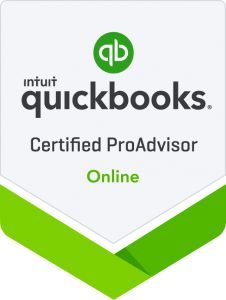Extending the Capabilities of QuickBooks
Extending the Capabilities of QuickBooks

As much as I love The Capabilities of QuickBooks as software, in my line of work as a solution provider for Intuit, I often see limitations in QuickBooks. So I keep my eyes open for products that I think would be beneficial to some of my clients. When looking for a solution, I want a good integration with QuickBooks, preferably easy to set up and use, and at a reasonable price. That narrows the field! I also limit my list to just a few programs so that I can be more familiar with them and be more useful to my clients.
When I first heard about method integration, I said: I don’t get it. What is a portal? A few months later I attended another product webinar with some very concrete QuickBooks examples. This time, I saw the light and was very excited about how I could expand the capacity of QuickBooks, how easily and how reasonably. So, I spent time learning the program in more depth and certification. The method addresses several different areas of shortcomings in QuickBooks, but you’re paying for a single solution, and you can customize it to suit your particular business.
The Capabilities of QuickBooks Method can integrate with QuickBooks in the following ways:
You can have real-time synchronization, without having to manually click sync, File, Import, or anything other than saving the input.
You can access your QuickBooks remotely, and your QuickBooks data file doesn’t have to be open.
You can have multiple users on QuickBooks, but you don’t need a QuickBooks license for each user; in fact, you can have more than a few hundred users in QuickBooks Pro with Method.
You can have more custom fields using Method than in QuickBooks. And you can use Custom Fields in Method where QuickBooks doesn’t have any. An example is custom fields for supplier invoices.
You can change the name of the fields. For example, you can call Customers “Customers” or rename Classes to Departments.
You can customize data entry screens in ways that you can’t in QuickBooks.
You can control access much better. In fact, you can even restrict your access to only a few specific transactions. And this keeps users out of your actual QuickBooks data file
If you have a Mac user and a PC user, they both access the same data file.
The method has a better audit trail; you can keep track of who made changes to lists such as Customers, Vendors, Items.
You can create dropdown lists, either to make data entry easier or to keep users out of other areas. E.g. You can provide a dropdown list for a sales rep of just your customers instead of having access to the entire list.
There are three different levels of method: remote, CRM, and full. Remote access is the basic level. At this level, you can access QuickBooks, set up custom fields, customize data entry screens, and limit access.
The next level is Method CRM (Customer Relationship Management) – you get all the basic features of a remote package but the added features of a CRM package. CRM method has two aspects: sales management and case management.
1. For sales management, Method allows you to track marketing campaigns, opportunities, and various sales activities. You can keep your contact list inside Method, but keep them outside of QuickBooks until they become clients or customers, and you don’t need to re-enter any kind of contact information for QuickBooks. Method CRM also integrates with Outlook, including email, appointment and event scheduling. From a manager’s point of view, they can see a dashboard and analytics on prospects, customers, and staff.
2. Some companies need to follow up on various technical or support issues with customers. With Method CRM, billing can be created in Method (and sent to QuickBooks), but the specific issues, who the case was assigned to, status, priority, and comments are kept in Method. Again, the dashboard and analysis can help identify problem areas as well as successful solutions.
At the full level, in addition to remote access and Method CRM, you get industry-specific applications and a free-form database. Two industry applications that are at this level are Method Warehouse and Method Field Services. As more are developed, you get them automatically, with no additional charges.
Method Warehouse addresses some of the weak areas of inventory in QuickBooks and includes the following features (this is the short list, there are more):
You can track

